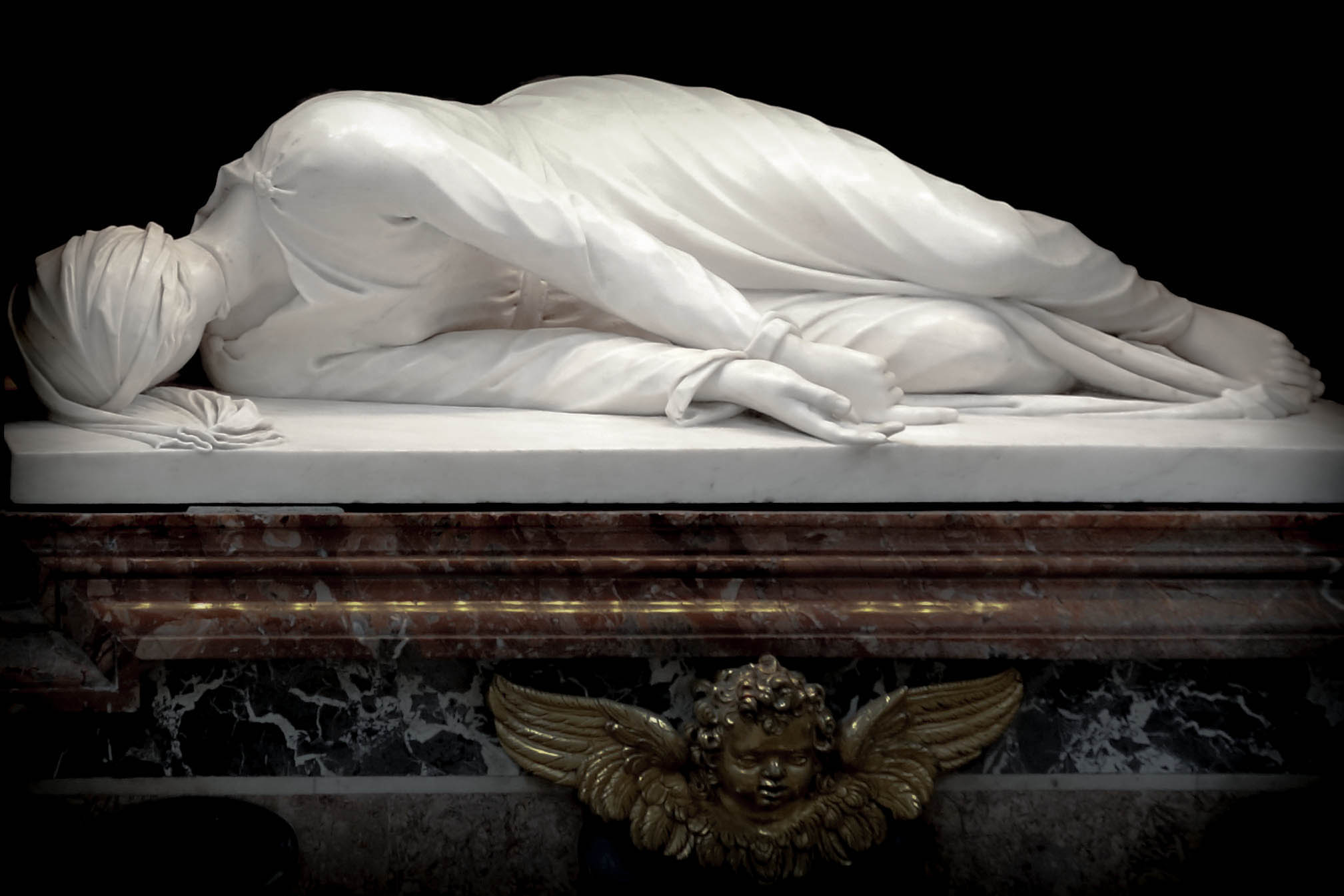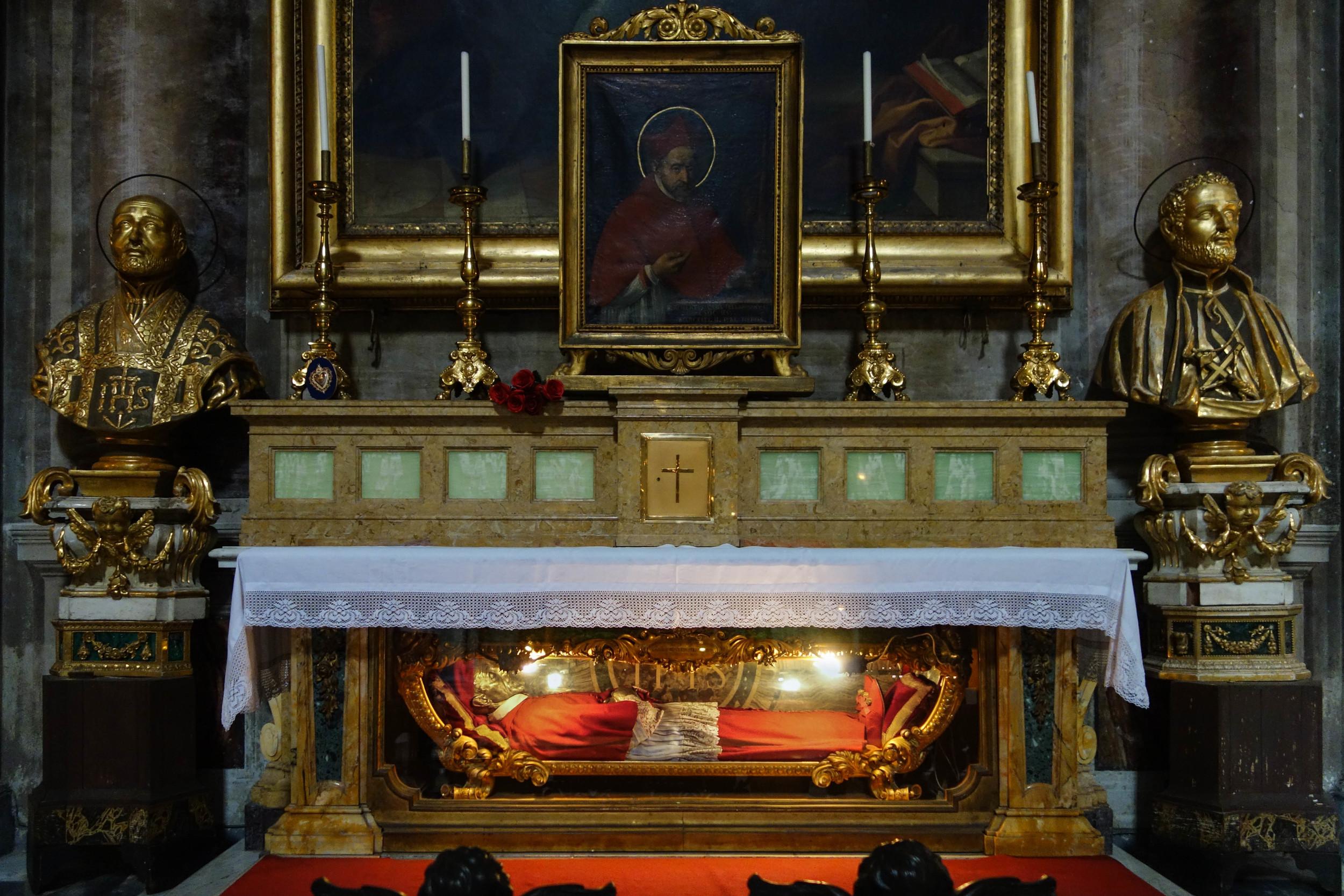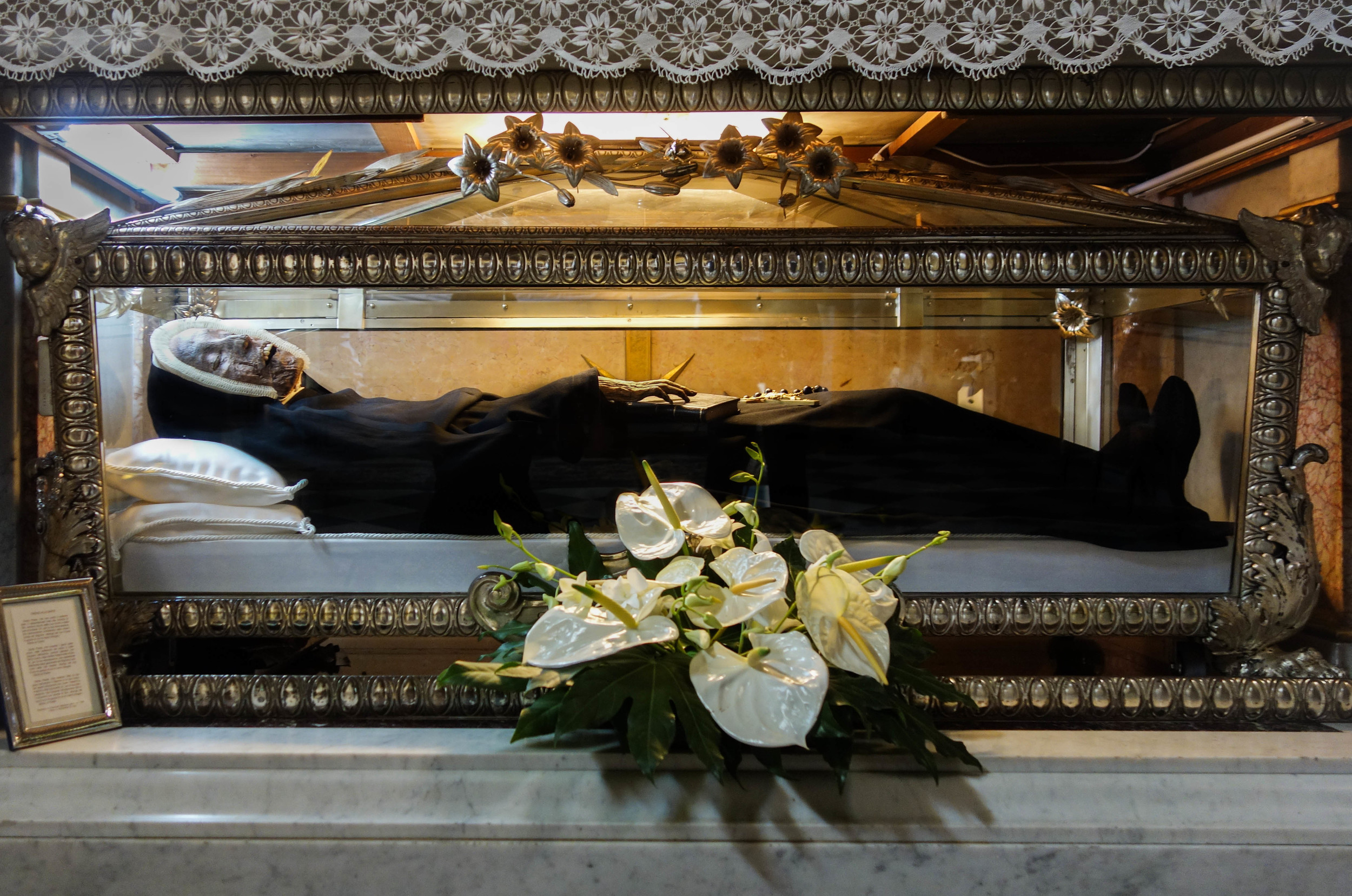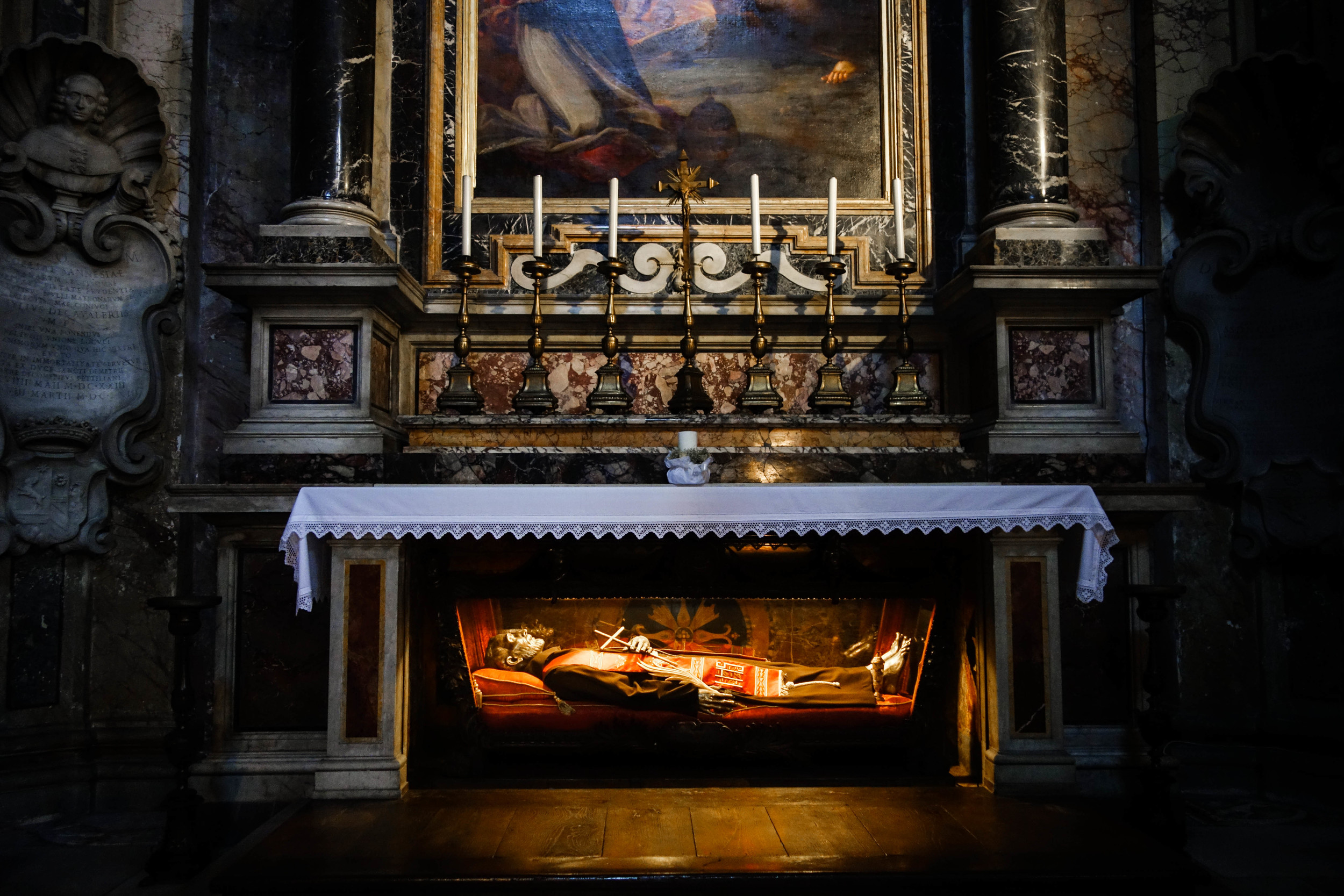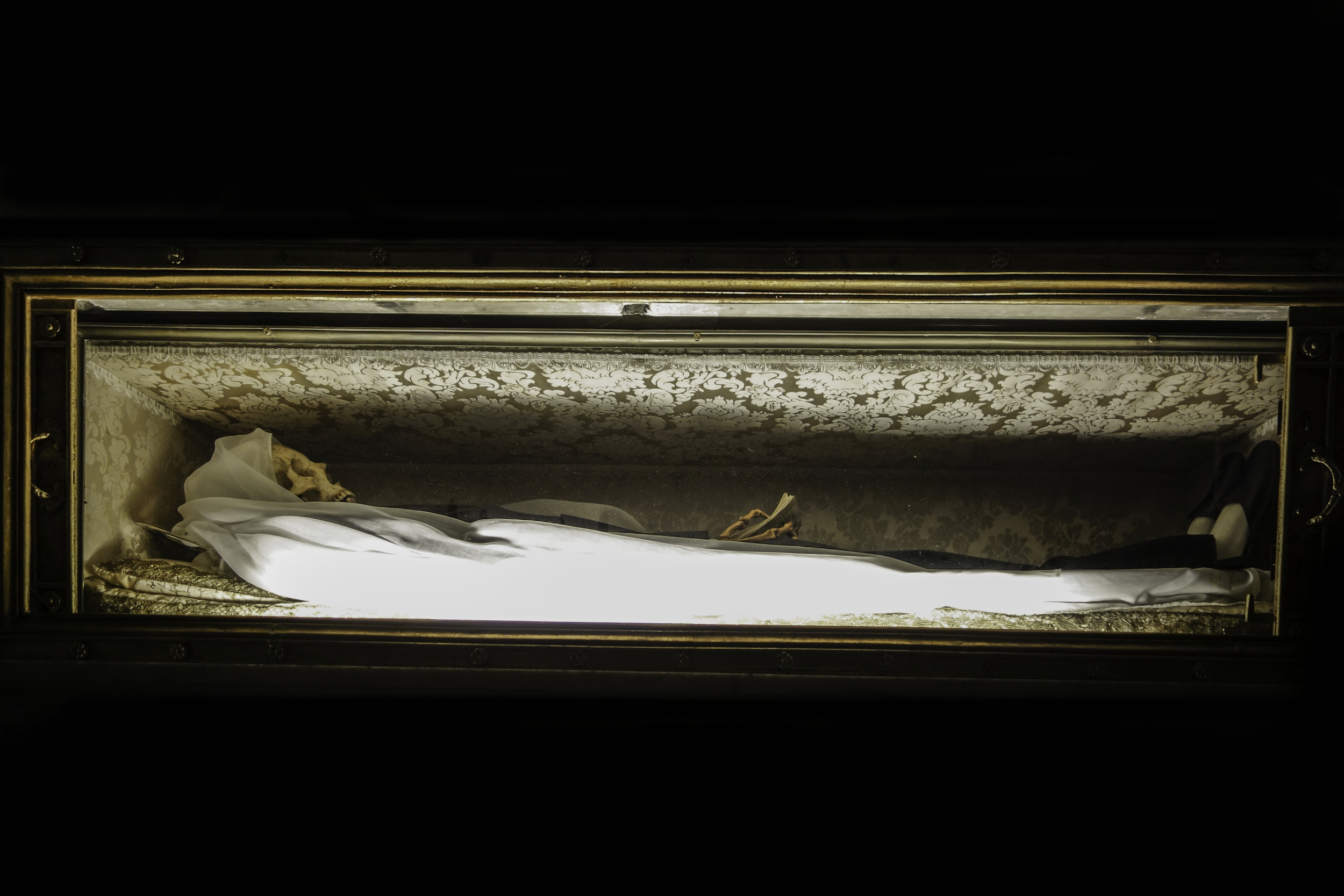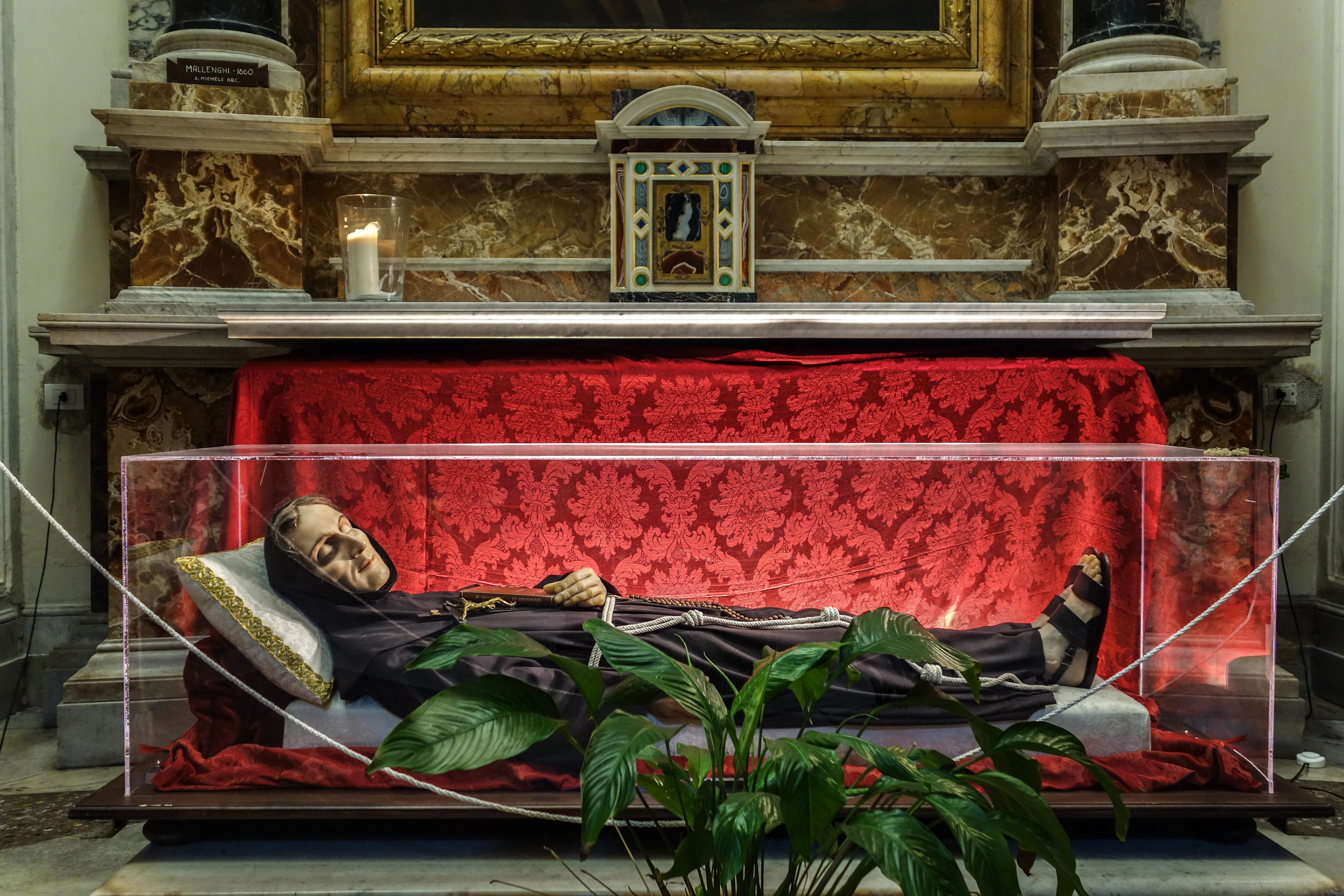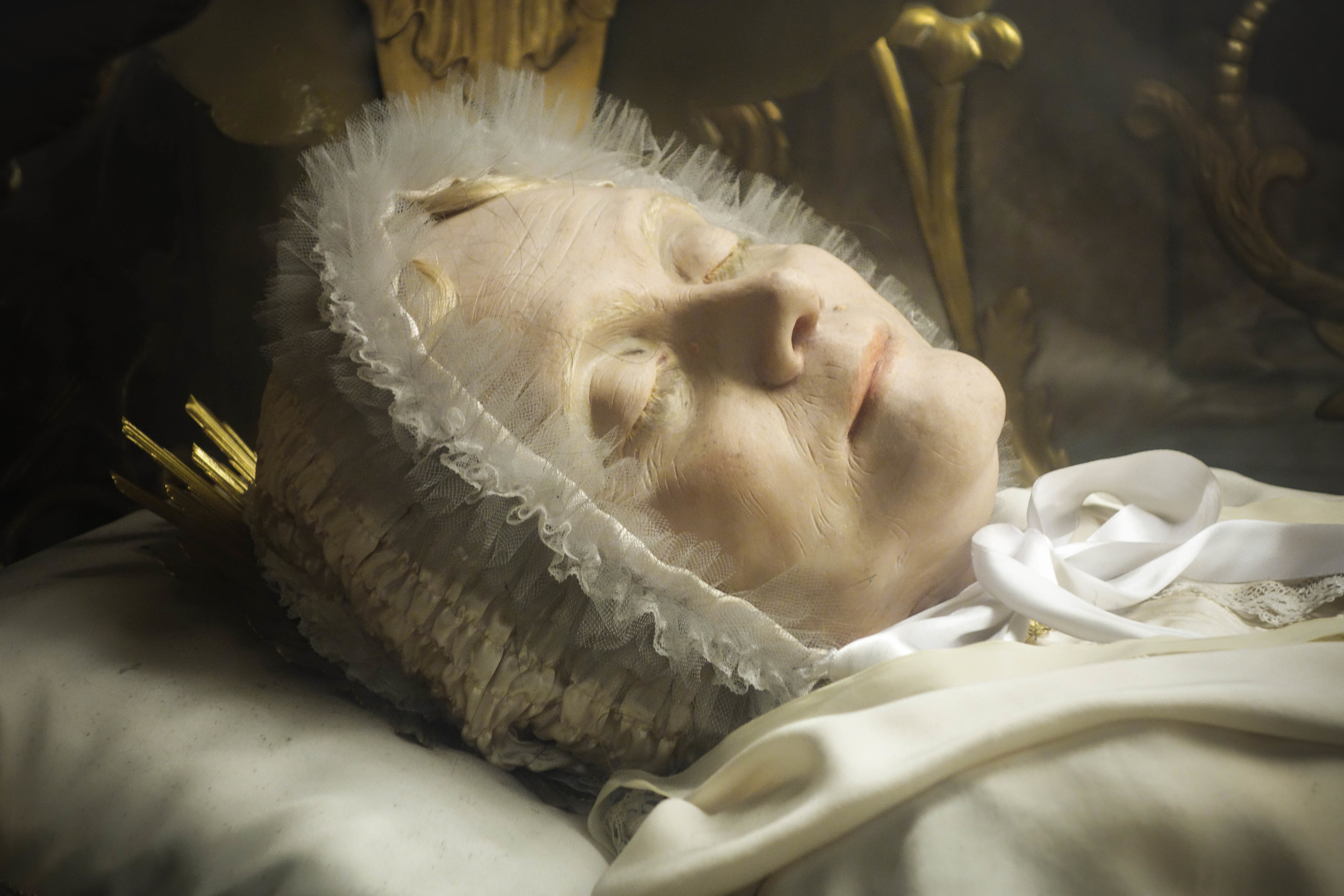An Interview with Vice Italia: The Saints of Rome Who Almost Seem Alive
Originally published on Vice: Italia in Italian by Mattia Salvia. Translation by Elizabeth Harper.
Elizabeth Harper is a photographer who works as a theatrical lighting designer in Los Angeles- which she mentioned is a strange town if you're interested in old things. There, the oldest things are often from the 1920s. And along with that, Elizabeth is obsessed with the macabre, religion, and the meeting point between the two.
Some time ago, she was in Rome where she photographed the obscure Catholic relics in the city for the Morbid Anatomy Museum in New York. Among these, she devoted special attention to the incorrupt bodies of Catholic saints preserved in glass caskets in some of the main churches of the city. Obviously, as soon as I saw her picture I instantly fell in love and I decided to contact her. I let her tell me the story behind these images, which after all, are just pictures of dead celebrities.
Besides having delicious sense of irony and a very special sensitivity, Elizabeth is a person of remarkable culture. We talked about religion and death as though we were two Romantics in nineteenth-century Italy making the Grand Tour .
VICE: What inspired you to start working on this project?
Elizabeth Harper: It all began on my blog, All the Saints You Should Know. I wanted to share my obsession with the more unusual aspects of Catholicism in a non-academic way that would be interesting for believers as well as non-believers. Many of these things are not well known for various reasons: some are at the fringes of the Catholic faith and are considered almost folklore; others are embarrassing to the Church because they remind us of the dark ages. Also, many priests prefer to focus on their pastoral duties rather than the history and art that their churches contain.
How did you end up photographing churches and relics of Rome?
I love Rome. I approach the city with the same spirit as the Romantic writers who visited her in the nineteenth-century: Lord Byron, Chauteaubriand, Goethe, et al. I have the same tendency to be inspired by the Gothic, the macabre and the sublime. Although I'm not a writer in the sense that they were writers, I think I feel the same.
All these photos are part of a book I'm working for the Morbid Anatomy Museum in New York. The book aims to explore Rome through its churches and the relics they contain. It will be a kind of guide to all these hidden wonders of Rome.
Where did your interest in Christianity, its saints and relics?
I come from a family of Italian immigrants, so I grew up in close contact with the Catholic Church. And as a child I was a rather morbid. Once at school, during religion class, I heard a story about Jesus and a leper. So I was both frightened and fascinated by leprosy. At the time there was no Internet, so I went to the library and asked for a book about leprosy but they must have misunderstood (or maybe they were shocked) because instead of a book on leprosy I was given one on leopards. After that I began to read the stories of Christian martyrs, and I was fascinated in particular by St. Cecilia.
I still remember the first time I saw a relic of a saint. You don't often see one in the United States. It was quite large- I think it was a piece of the liver of a saint. The priest at our church was standing in the lobby and held the golden reliquary so everyone could see it. I was about nine years old and that was my first contact with the sublime. I saw the guts of that saint and I thought about my own liver. For the first time in my life I thought about what would happen to me after I died.
What is your relationship with death?
Of course we can't know what happens when we die. But if you think of death as an idea rather than as an event, you'll find that it's a very profound influence our lives- it is the only thing we can be certain. I think it's difficult in the modern world, to realize that we are limited. But this is why death is important, because it's the limit we must face. It seems trite to say, but the awareness of my mortality makes me happy to be alive and happy to work on this project. It's my small contribution- to leave the world a bit more orderly and a bit more interesting than I found it.
That said, I'd be lying if I didn't admit that at this point in my life, death seems very remote. The women in my family tend to live to be well over 90 years and have long, satisfactory lives. Maybe that's why I still fear what was once called "a bad death" -a sudden or violent death. On a plane I'm afraid of the slightest turbulence. Maybe that makes me a little hypocritical.
What is it that fascinates you the uncorrupted bodies of saints?
I love to photograph them because they're uncanny. I love their stillness, their monumental symmetry, the intimacy and the vulnerability of their faces that look almost asleep. I especially like those stored in glass coffins, straight out of a fairy tale. It's as if they're stubborn, as if they don't care about the modern society, because after all this, they're still there. Seeing them gives me a special feeling, because you whether you believe in their holiness or not, you're forced to admit that even when you're dust, they will still be there, intact.
Did you learn anything working on this project?
I have learned many things. To give just one example, I never understood the American obsession with zombies until I found myself in a putridarium.
A putridarium is a type of crypt inside a church where bodies were left to rot in special niches. Once there were only bones left, they were buried. In Italy, the putridarium was linked to the concept of purgatory- so while the body got rid of its flesh, the soul in purgatory got rid of its sins. When all that remained was a skeleton, the dead man was considered at peace and in heaven.
I realized that when we think of a decomposing body trapped in a liminal stage between life and death (this is the concept of a zombie) it's yet another representation of the concept of purgatory. Being a zombie is to be trapped between, and it's something that frightens us. It is why zombies are scarier than the skeletons, and why on Halloween little children dress up as skeletons but not zombies. We are all afraid of finding ourselves, after death, stuck in a place of passage. And we always find new ways of expressing this fear.
But perhaps the most important thing that I learned was something that the Italian poet, Ugo Foscolo, said a long time ago, and with words far better than I could find:
A egregie cose il forte animo accendono
l'urne de' forti, o Pindemonte; e bella
e santa fanno al peregrin la terra
ch le riccetta.
(The urns of strong men stimulate strong minds
To deeds of great distinction; and these urns
Make sacred for the traveller that earth
Which holds them.)
